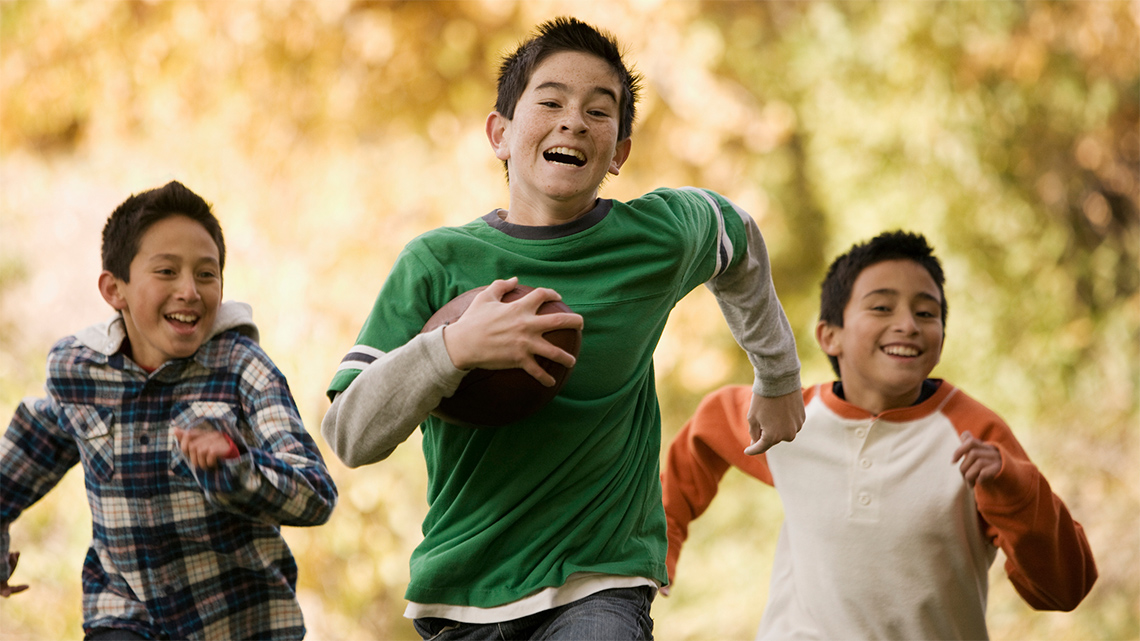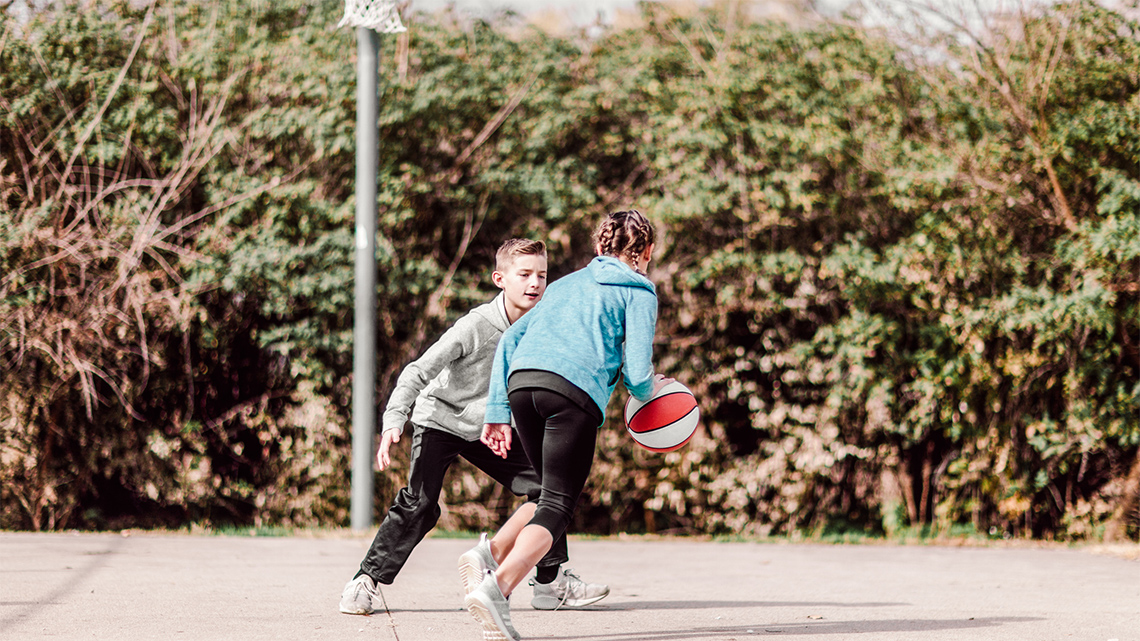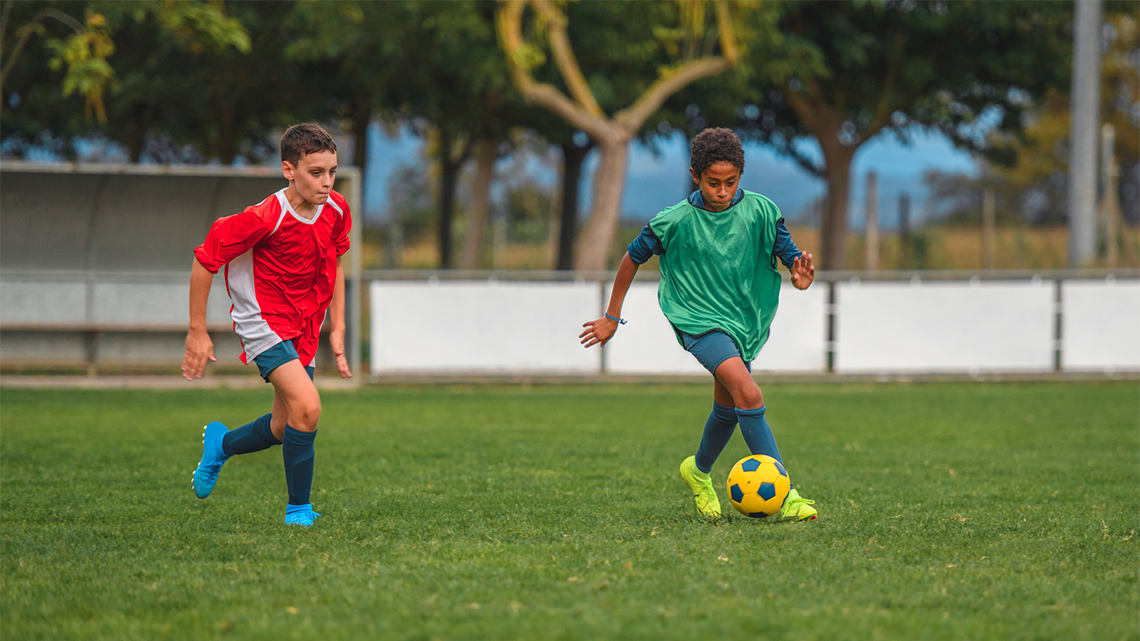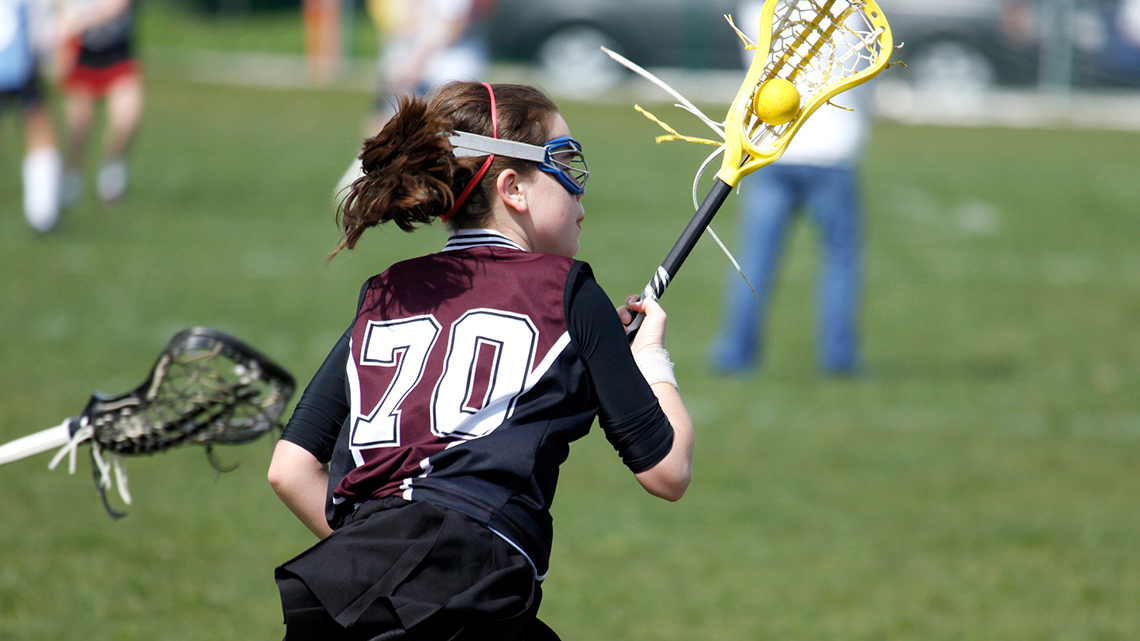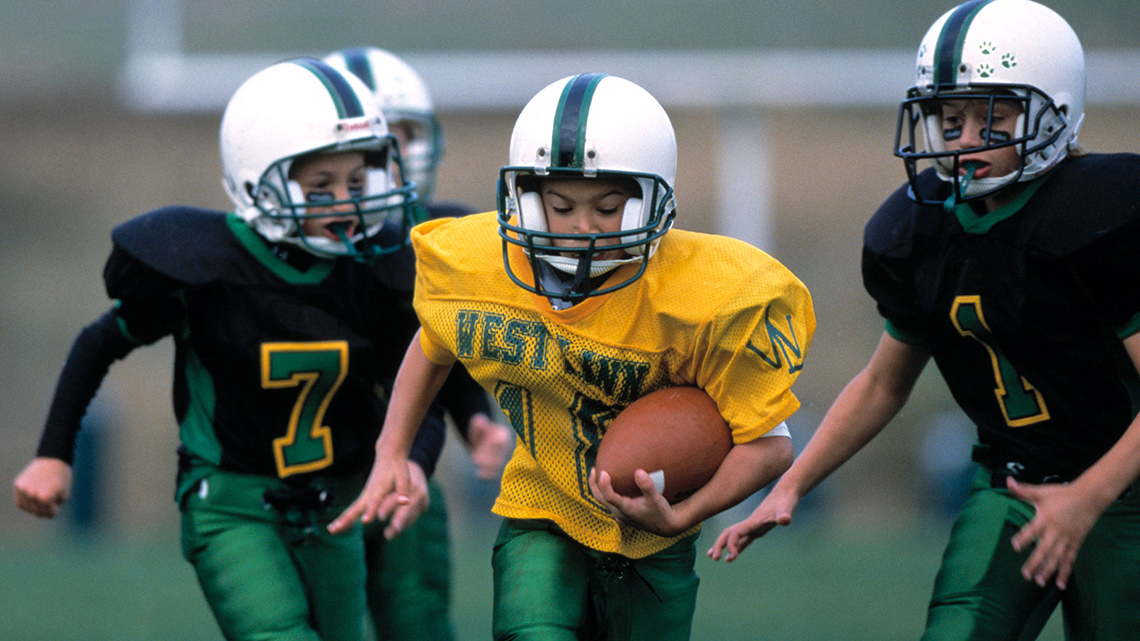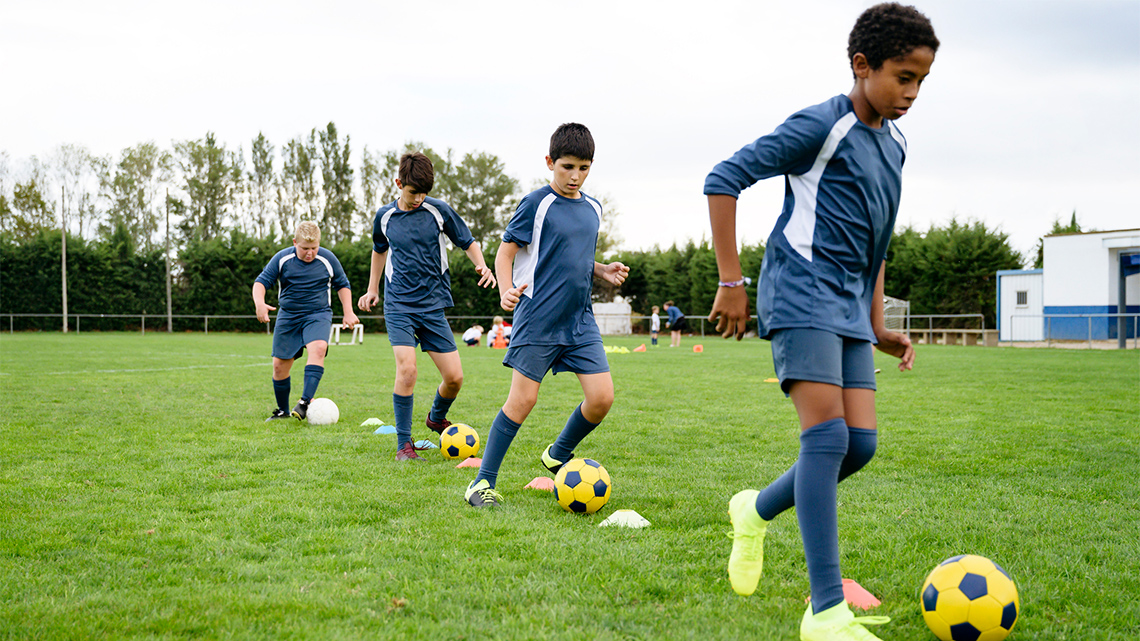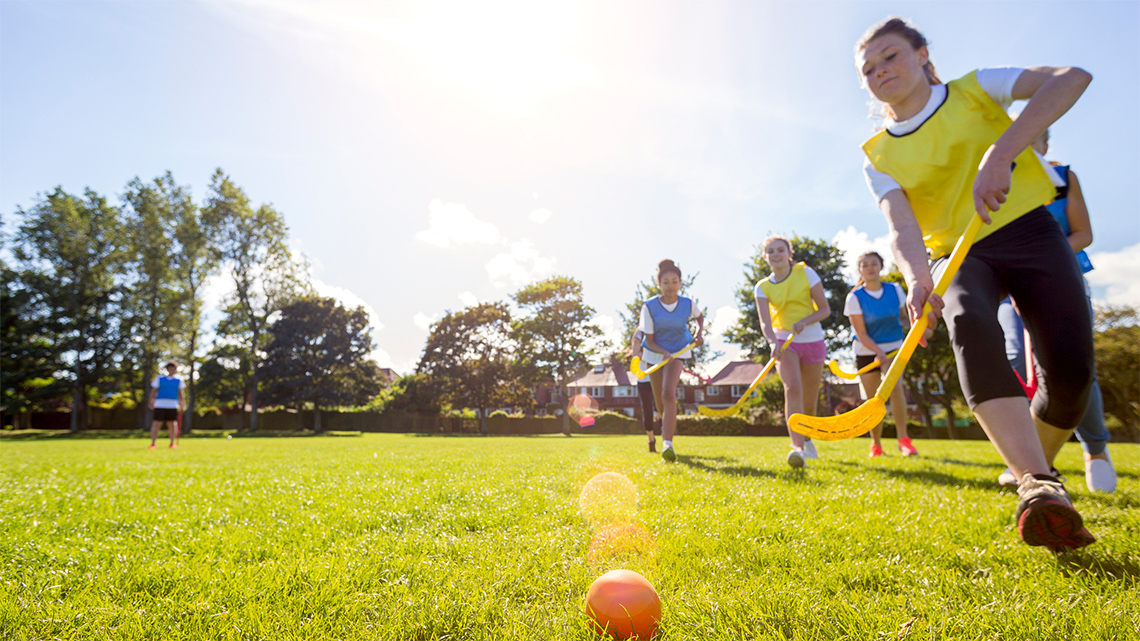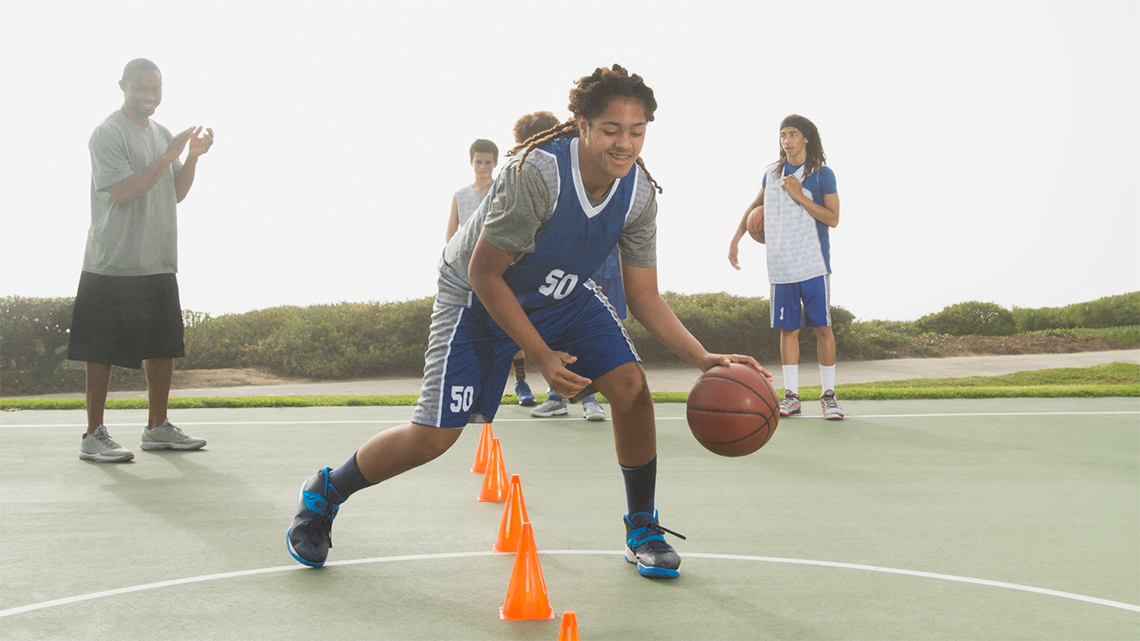Minds On
Keep away
Most sports are made up of many different types of locomotor movements.
Explore the following carousal images and reflect on what you observe.
What movements did you notice in the previous images?
What did you notice about how they were holding the objects (basketball, soccer ball, etc.)?
How important do you think the object is to their movements?
Student Success
Think-Pair-Share
If possible, with a partner, think of games or activities that people may play with a ball.
List 3-4 games that you have played where the ball or object is carried.
Note to teachers: See your teacher guide for collaboration tools, ideas and suggestions.
Action
Retaining
Retaining is maintaining the possession of an object while moving or being stationary (still).

Examples of retaining are dribbling in soccer, running with the ball in football, and carrying a ball in lacrosse.
Explore the images below for more examples of how people retain objects in sports.
How to retain
How can you retain an object? Here are a few key strategies:
- Maintain control of the object.
- Keep the object close to the body.
- Grip the object by carrying it so that you don’t drop it.
- Be aware of your surroundings.
- If possible, communicate to peers/teammates.
Carrying
Carrying an object is another way of retaining.
For example, holding an object while moving, like holding a football while running, or carrying an object to the other side of a room, are all different forms of carrying.
Examine the images below for other examples of how objects can be carried during physical activities.
How to carry
Let’s explore a few ways how we can carry an object securely:
- Keep the object close to the body.
- Maintain a firm grip around the object.
- Carry the object under one arm with the other hand on top of the object.
- Move in short, swift steps and in different directions.
Safety
Before you begin, consider these safety precautions:
Warm Up
Warm up
Let’s warm up your body before the activity. Try the following exercises to help you stretch, prevent any injuries, and perform the movements in the next activity.
Remember to warm up before doing any physical activity!
Press the following tabs for warm-up activities that you can try.
If you can, let’s stretch our necks! This stretch can be performed standing up or in a seated position. Keep your shoulders relaxed as you begin with your head facing forwards. Gently and slowly tilt your head to the right. Hold here for five seconds. Begin rolling your head slowly, keeping your chin tucked and head down, to the opposite side. Hold for five seconds. Roll your neck back to the middle, then bring your head up to the starting position. Repeat 3-5 times.

If you can, let’s warm up our shoulders! Either standing or in a seated position, raise and extend your arms to the sides without bending the elbows. If you are standing, have your feet shoulder-width apart. Keep your thumbs pointing in front of you. Begin slowly rotating your arms forward, making small circles. Go forward for 20-30 seconds, then backwards for the same amount of time.

If possible, stand tall and shift your weight to your right leg. Lift your left foot back and hold it with your left hand. Pull the left foot towards your butt and feel the stretch. Hold the stretch for 20 seconds and repeat with the right leg. Repeat the stretch five times for each leg.

Stand or sit upright with your hands to your sides and lift one leg slightly up to make small circles with your ankles. Do this 10 times in each direction and repeat with your other foot.

Stand or sit upright with your hands in front of your chest. Hold one wrist with the other hand and make small circles with the wrist that is being held. Complete this 10 times in each direction and repeat with your other hand.

Begin in a standing position with your legs together and your arms at your sides. Stretch your arms above your head and jump slightly so that your feet are spread wider than shoulder-length. Repeat this movement 10 times.
 Description
Description
A person begins a jumping jack by standing straight with their hands at their sides. They jump so they end with their feet spread apart and their hands touching above their head.
Carry it!
Choose three of the following six tasks to try with an object of your choice. You could use items like a plastic ball, a crumpled piece of paper, or a pillow. Try the selected tasks for at least one minute.
- Carry the object and then bounce it. Repeat.
- Carry the object while staying close to the ground.
- Throw the object up and then catch it. Repeat.
- Carry the object behind your back.
- Roll or kick the object, and then carry it. Repeat.
- Carry the object while moving in a zigzag pattern.
Pause and Reflect
Pause and reflect
After you’ve completed the activity, consider the following questions:
- What strategies did you use to carry an object successfully?
- What tasks would you like to continue to practise? Why?
- Would you change your strategy? Why or why not?
Record your answers in a method of your choice.
Dribbling
Dribbling is bouncing an object by hand or controlling it with the feet. Dribbling is also controlling the object while moving with it.
For instance, dribbling a basketball on the ground or dribbling a soccer ball towards a goal post are both forms of dribbling.
Explore the following images for more examples of dribbling.
How to dribble
Press each tab to explore how to dribble.
Strategies to remember:
- Keep your head and eyes up.
- Keep the object low and close to your body.
- Bend your knees and lean forward.
- Push the object/ball down using your wrist and finger pads to control the bounce.
- Bounce the object/ball at or below waist-level.
Access the following video to learn more about how to dribble with your hands.
Strategies to remember:
- Keep your eyes forward and lift your head to look around.
- Use your ankle and foot to push and roll the object/ball forward.
- Dribble using the inside and outside of feet (not the toe).
- Move the object/ball from one foot to another.
- Use short and quick shuffles to control the object/ball.
- Put your foot on top of the object/ball to change directions or to stop the object from moving away.
- Keep the object/ball close to your body.
- Use your arms to maintain balance.
Check out the following video to learn more about dribbling with your feet.
Relay

In this activity, you will practise your dribbling and retaining skills.
If possible, this activity should be done with the following equipment:
- objects, like cones, to place on the floor
- a ball or similar object like a rolled-up sock
Remember to perform your safety check before you begin.
Place up to six cones (or any marker or object that can be found) a few feet apart in a straight line. Use the image below as a guide for a possible way to set up this activity.

You will dribble your object, either using your hands or feet, to weave around the cones or markers you have chosen. Once you have dribbled around all the markers, carry the object back through the markers to the place where you started.
Repeat this 3-5 times. If possible, record the time it took to complete the relay.
Try It
Relay challenge
Try some of the following modifications to alter this activity:
- space the markers closer together
- dribble at different levels
- carry the object backwards through the markers
Reflect on the following questions:
- What was your quickest time? How did you achieve it?
- What changes might you make in the future? Why?
- If you altered the activity in the relay challenge, how did the modifications affect this task?
Cool Down
Loco-slow
Remember to perform your safety check before you begin!
- Choose a locomotion of your choice (walk, jog, shuffle, skip, etc.).
- Move around slowly around the room or your space while doing any of the
following:
- touch shoulders with hands, then reach up over the head 10 times
- wave arms from side to side and forward like a tree 10 times
- raise knees slightly, then take 10 giant steps in slow motion
Consolidation
Tactical solutions
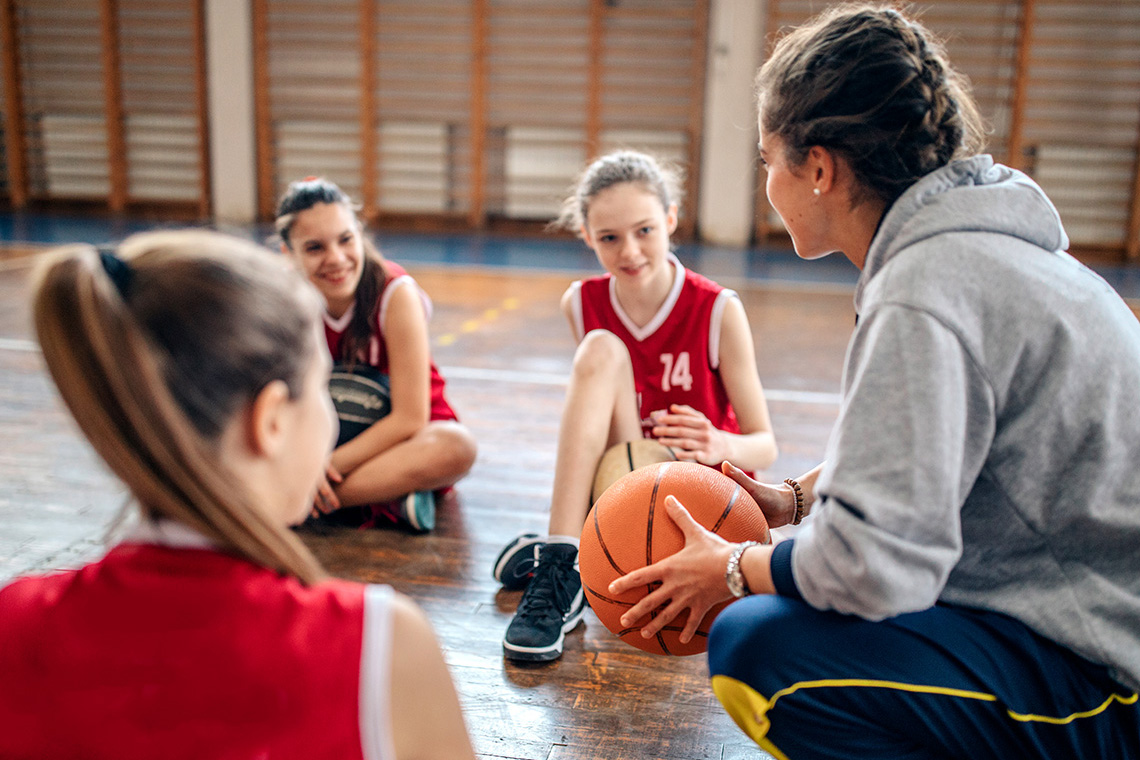
Now it is time to take what you have learned about retaining, dribbling, and carrying and find tactical solutions to help others improve their soccer or basketball skills. Imagine you are coaching a team and you need to offer them advice. Think about what tips you would provide certain players on your team.
Consider the following questions as you think about what advice to give your team:
- When retaining, how would you make it more difficult for opponents to take the ball?
- When dribbling, how can you increase your team’s chance of controlling the ball?
- When carrying, how would you make it harder for opponents to catch the person carrying the ball?
When you are ready, complete the My Coaching Tips chart in your notebook or using the following fillable and printable document. If you would like, you can use speech-to-text or audio recording tools to record your thoughts.
|
Retaining strategies (how would you make it more difficult for opponents to take the ball?): |
|
Dribbling strategies (how can you increase your team’s chance of controlling the ball?): |
|
Carrying strategies (how would you make it harder for opponents to catch the person carrying the ball?): |
Press the ‘Activity’ button to access My Coaching Tips.
Try It
Demonstrate it
Now let’s put your advice to the test! Demonstrate the strategies from your coaching tips, as well as the other retaining, dribbling, and carrying techniques that you learned in the previous activities. You may draw the movements, record yourself performing the movements, or complete this activity using another method of your choice.
Reflection
As you read through these descriptions, which sentence best describes how you are feeling about your understanding of this learning activity? Press the button that is beside this sentence.
I feel…
Now, record your ideas using a voice recorder, speech-to-text, or writing tool.
